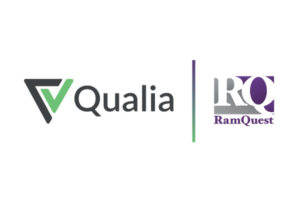On January 29, 2025, Old Republic Title and Qualia announced a major shake-up in the title and escrow technology space. As part of their newly formed strategic partnership, Qualia will acquire Old Republic Title’s RamQuest and E-Closing platforms. While change always brings a degree of uncertainty, this move presents a significant opportunity for title agents to transition to a modernized, more efficient title production system.
So, what does this acquisition mean for you if you’re currently using RamQuest? Let’s break it down.
What’s Changing?
For now, not much. Qualia has committed to supporting RamQuest for a transition period—three years for RamQuest CCE and one year for RamQuest One. This gives you time to evaluate your options and plan your next move without immediate disruption.
However, beyond this period, RamQuest products will be retired. This means title agents will need to transition to a new title production system (TPS) before the sunset date to avoid operational issues.
Your Options Moving Forward
Qualia has positioned its own title production system as the natural next step, offering RamQuest users a discounted migration path. However, this isn’t your only option. Title agents will need to assess their specific needs before deciding whether to:
- Move to a Cloud-Based SaaS TPS – Solutions like Qualia Core provide seamless updates, built-in compliance, and accessibility from anywhere. This is an attractive option for many title agents, especially smaller operations that benefit from reducing their IT overhead or are ready to get rid of that old server in their IT closet.
- Adopt a Self-Hosted Solution in Microsoft Azure – Larger title agencies that require more customization and control may opt to host their TPS on a dedicated cloud environment like Microsoft Azure. Solutions like Resware (a Qualia product) and SoftPro are two available options in this category, allowing for greater flexibility while still leveraging the benefits of cloud infrastructure.
Key Considerations for Title Agents
Regardless of which direction you take, there are two major concerns that all title agents must address:
- Legacy Data Management – What happens to your existing data when RamQuest is phased out? Ensuring continued access to historical records is critical. The right migration plan should include data archiving or conversion solutions that prevent loss of important information.
- Minimizing Disruptions – Switching to a new TPS is a major operational shift. Maintaining workflow efficiency and training staff on the new system will be essential to a smooth transition.
How Premier One Can Help
With decades of IT expertise in the title industry, Premier One specializes in helping title agencies migrate to modern, secure, and efficient technology solutions. Whether you’re considering a SaaS TPS or a self-hosted Azure deployment, our team can guide you through the transition process with minimal disruption.
Now is the time to start planning. Don’t wait until the last minute to make a decision—schedule a call with Premier One today to explore your options and build a strategy that fits your business needs


